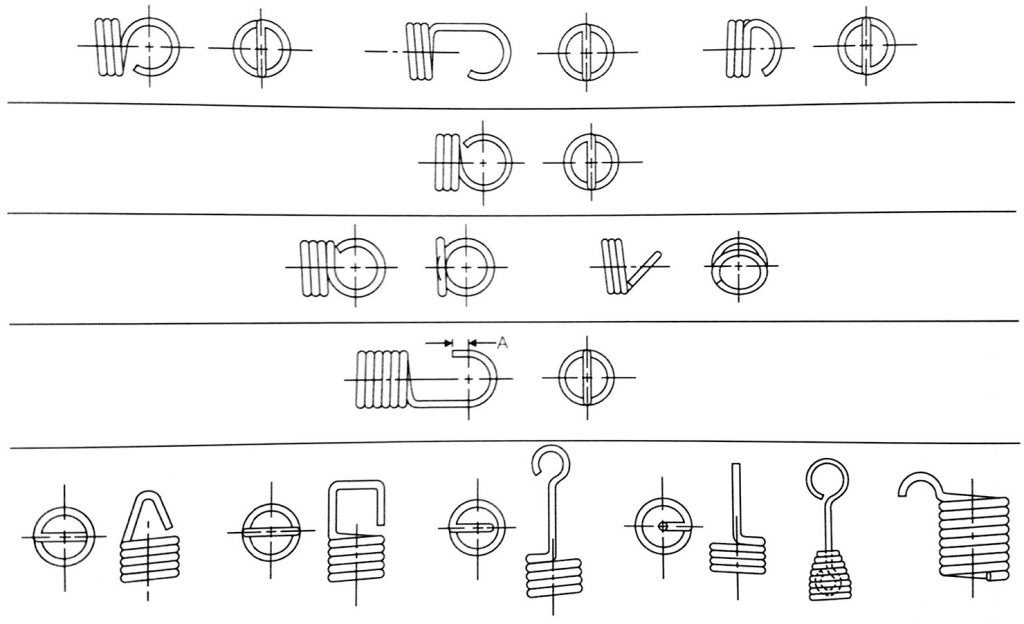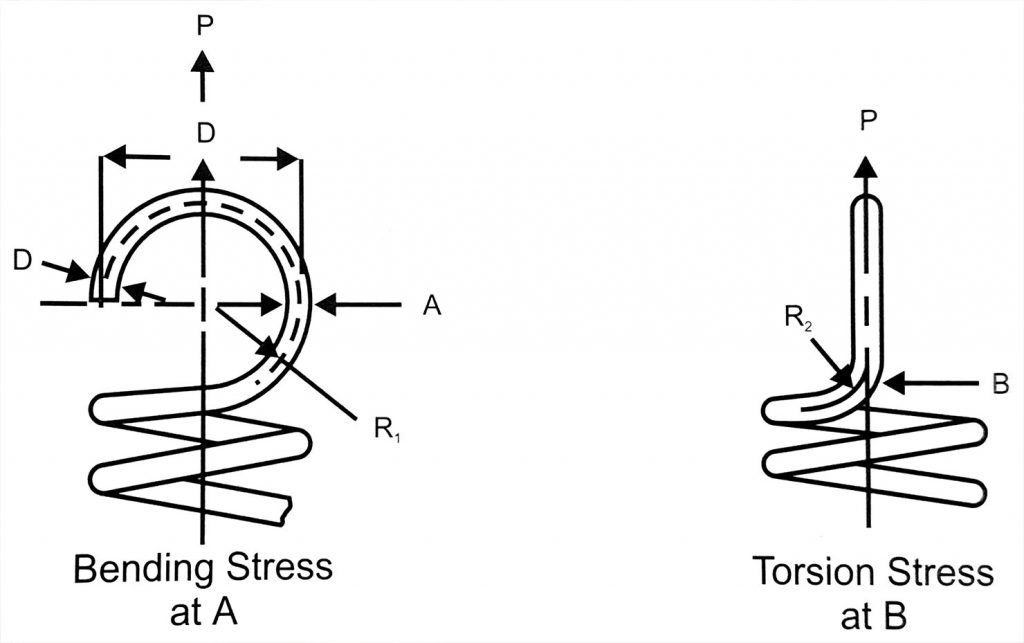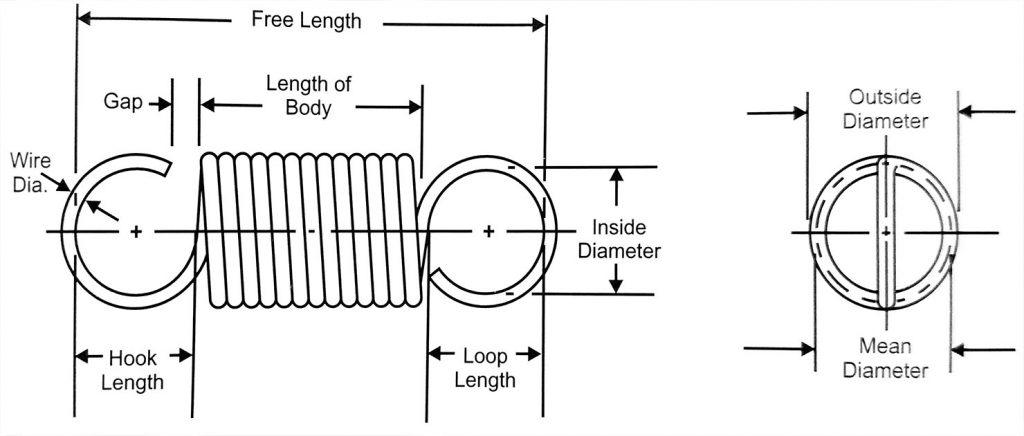Extension springs, or helical extension springs, store energy and exert a pulling force. They’re often made with round wire and are close-wound with initial tension. Applications include tape cassette players, garage doors, balance scales, and automatic washing machines.
Extension springs are stressed in torsion in the body. The design is similar to that of compression springs with a few exceptions:
- Most extension springs are coiled with initial tension.
- These do not have a solid stop to prevent overloading, thus stress levels are usually lower than for compression springs.
Initial Tension
Initial tension is equal to the minimum force required to separate adjacent coils. The amount that can be put into a spring depends on its index, material, manufacture method, and post-coiling stress relief treatment. Small diameter music wire is able to support higher levels of this than a lower strength material like large diameter hard-drawn wire. The higher the spring index, the less initial tension it will have. To have a spring with no initial tension, it must be designed with space between the coils. To calculate this in a simplified way:
with
initial tension
Design (similar to compression springs):
Extension springs require a method of attachment to other parts in an assembly, and there are a variety of possibilities. The most common type are those that can be formed during the spring making operation, which includes twist, cross center, side loops, and extended hooks.

Stresses in spring loops are often greater than in the spring body, which limits spring performance. Methods to reduce these stresses include generous bend radii in loops and reduced end coil diameters. In the following figure depicting a full twist loop, stress reaches a maximum at point A in bending, and a maximum in torsion at point B.


Typically made from round wire, extension springs are then close-wound for initial tension. The close-wound initial tension is the main difference between compression and extension springs production. Extension springs are mainly used in applications where springs need to store energy and exert a pulling force.
Main Applications
Extension springs are commonly manufactured for applications in automatic washing machines, balance scales and other types of spring tensioning devices.
Testimonial
Their pricing has remained competitive, quality has been excellent, and their customer service is probably the best out of any of the suppliers on our approved list.”

Design Considerations
Have You Considered These Factors?
- Allow Clearance for dynamically-loaded custom extensions springs. When deflected, extension springs do not require central arbors or holes that would prevent buckling. Sudden dynamic loading or unloading may cause the extension spring to vibrate laterally, which may induce additional stresses and result in noise and premature failure. The appropriate clearance can reduce or alleviate these stresses and results.
- Static Operating Stress — Because extension spring wire ends are often stretched, distorted or marked during loop-making, the maximum recommended stress of the ends is lower than in the body of the spring.
- Tolerance Guidelines — Because some spring manufacturers have different process capabilities that may vary tolerance values, discuss your commercial-free lengths, the angular relationship of ends and load tolerance needs with your manufacturer.
- Close tolerances can increase manufacturing costs.

